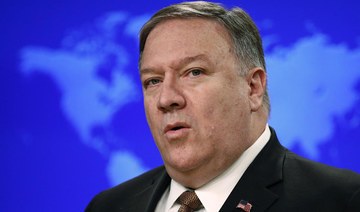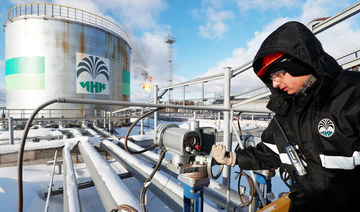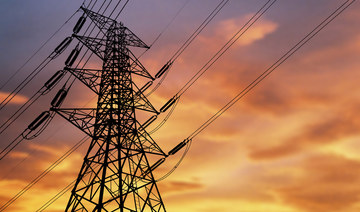WASHINGTON/SINGAPORE: The United States is expected to announce on Monday that all buyers of Iranian oil will have to end their imports shortly or face sanctions, a source familiar with the situation told Reuters, triggering a 3 percent rise in crude prices.
The source confirmed a report by a Washington Post columnist that the administration will terminate the sanctions waivers it granted to some importers of Iranian oil late last year.
Benchmark Brent crude oil futures rose by as much as 3.2 percent to $74.30 a barrel, the highest since November 1, in early trading on Monday in reaction to expectations of tightening supply. US West Texas Intermediate (WTI) futures climbed as much as 2.9 percent to $65.87 a barrel, its highest since Oct. 30.
US President Donald Trump has made clear to his national security team over the last few weeks that he wants to end the waivers to exert “maximum economic pressure” on Iran by cutting off its oil exports and reducing its main revenue source to zero.
In November, the US reimposed sanctions on exports of Iranian oil after President Trump unilaterally pulled out of a 2015 nuclear accord between Iran and six world powers.
Washington, however, granted waivers to Iran’s eight main buyers — China, India, Japan, South Korea, Taiwan, Turkey, Italy and Greece — that allowed them limited purchases for six months.
On Monday, Secretary of State Mike Pompeo will announce “that, as of May 2, the State Department will no longer grant sanctions waivers to any country that is currently importing Iranian crude or condensate,” the Post’s columnist Josh Rogin said in his report, citing two State Department officials that he did not name.
On April 17, Frank Fannon, US Assistant Secretary of State for Energy Resources, repeated the administration’s position that “our goal is to get to zero Iranian exports as quickly as possible.”
Peter Kiernan, lead energy analyst at the Economist Intelligence Unit (EIU) said “a severe loss in (Iranian) volumes will put pressure on the supply side, given the political uncertainty currently blighting other oil exporters, such as Venezuela and Libya.”
Global oil markets have also tightened this year because of supply cuts led by the Organization of the Petroleum Exporting Countries (OPEC).
As a result, Brent prices have risen by more than a third this year, and WTI more than 40 percent over the same period.
Kiernan said he expected the “Trump administration to try to rely on Saudi Arabia ... to reverse policy and increase volumes to calm market fears of oil supplies quickly tightening.”
Saudi Arabia is the world’s biggest exporter of crude oil and OPEC’s de facto leader.
“If there is a time for the US to be able to take a hard line it is now, with the Saudis having over 2 million barrels (per day) of spare capacity,” said Tony Nunan, oil risk manager at Mitsubishi Corp. in Tokyo.
An end to the exemptions would hit Asian buyers the hardest. Iran’s biggest oil customers are China and India, who have both been lobbying for extensions to sanction waivers.
South Korea, a close US ally, is a major buyer of Iranian condensate, an ultra-light form of crude oil that its refining industry relies on to produce petrochemicals.
Government officials there declined to comment as well, but Kim Jae-kyung of the Korean Energy Economics Institute said the end of the sanction waivers “will be a problem if South Korea can’t bring in cheap Iranian condensate (for) South Korean petrochemical makers.”
Japan is another close US ally in Asia that is also a traditionally significant buyer of Iranian oil.
Takayuki Nogami, chief economist at Japan Oil, Gas and Metals National Corporation (JOGMEC) said the end of the sanction waivers “is not a good policy for Trump.”
Nogami said he expected oil prices to rise further because of the US sanctions and OPEC-led supply cuts.
So far in April, Iranian exports were averaging below 1 million barrels per day (bpd), according to Refinitiv Eikon data and two other companies that track exports and declined to be identified.
That is lower than at least 1.1 million bpd estimated for March, and down from more than 2.5 million bpd before the renewed sanctions were announced last May.
Oil prices spike as US prepares end to Iran sanctions waivers
Oil prices spike as US prepares end to Iran sanctions waivers

- US President Donald Trump wants to end the waivers to exert ‘maximum economic pressure’ on Iran
- Global oil markets have also tightened this year because of supply cuts led by the OPEC
SEC closes $3bn financing for 3.6GW capacity power stations
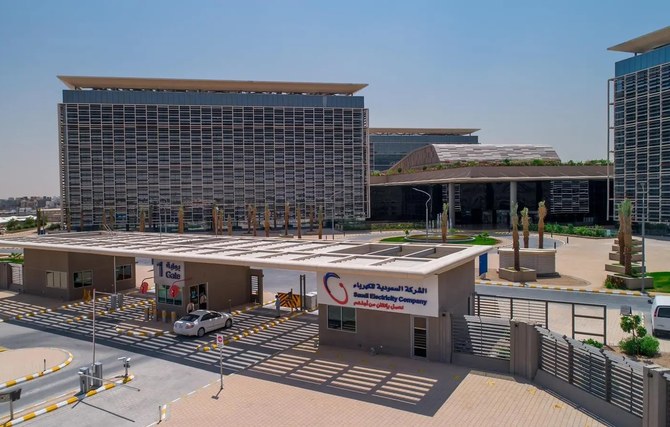
RIYADH: Saudi Arabia’s power generation is poised for a substantial boost following the successful closing of financing for two electricity projects, with a combined capacity of 3.6 gigawatts.
The deals involving the Taiba 1 and Qassim 1 independent power producer projects, with a combined financing value of SR11.4 billion ($3.04 billion), signify a major milestone in Saudi Arabia’s energy landscape, the Saudi Press Agency reported.
The two IPP projects, featuring combined cycle gas turbine technology, were awarded to the Saudi Electricity Co. by the Saudi Power Procurement Co. as part of an alliance with ACWA Power in October 2023.
Additionally, in November 2023, a 25-year power purchase agreement was signed with the SPPC for both projects, which are being developed on a build-own-operate basis.
Khalid Al-Qunun, CEO of SEC, commended the efforts of the company’s team in driving transformation in the electric energy sector in the Kingdom, the SPA report added.
He said: “These projects embody our ongoing ambitions to expand energy generation projects and adopt the latest technologies to ensure the provision of environmentally friendly energy solutions that contribute to achieving the company’s zero neutrality target by 2050, in line with the Kingdom’s ambitious aspirations in the field of energy sustainability.”
The financing agreements were signed by the two project companies: Sidra One for Electricity for the Taiba 1 station and Qudra Energy for the Qassim 1 station. The SEC holds a 40 percent share in both companies.
These modern stations represent a notable advancement in electric energy production in the Kingdom. They signify an important step toward a sustainable future by utilizing the latest energy production technologies, such as combined cycle gas turbines known for their high efficiency.
According to the SPA report, relying on these advanced technologies contributes to improving generation efficiency, reducing emissions, and reducing reliance on liquid fuels in the electricity production sector in the Kingdom.
These stations mark the beginning of a series of CCGT stations that will expedite the realization of Saudi Vision 2030 goals, including achieving an optimal energy mix and increasing local content.
This also sets the stage for achieving the goals of the Saudi Green Initiative, aiming for carbon neutrality by 2060. The engineering design of these stations allows for the future integration of carbon capture facilities, underscoring the SEC’s commitment to environmental, social, and governance responsibility, the SPA report added.
Qatar’s non-energy private sector records improvement in April

RIYADH: Qatar’s non-energy private sector witnesses improvement in business conditions in April as the Purchasing Managers’ Index hit 52, compared to 50.6 in March, according to the latest data.
The Qatar Financial Center PMI is a composite single-figure indicator of non-energy private sector performance that is derived from indicators for new orders, output, employment, suppliers’ delivery times and stocks of purchases. A reading above 50 signifies sectoral expansion, while below that mark indicates contraction.
The latest PMI survey data from the center compiled by US-based capital marker firm S&P Global showed that the 1.4-point increase between March and April in the headline figure was among the largest registered over the past two years, according to a statement.
Moreover, the data disclosed that while output, new orders, employment and purchasing activity all increased at faster rates than in March, price pressures turned slightly negative, as both input and output prices fell marginally.
Additionally, the volume of incoming new business in Qatar’s non-energy economy rose at the fastest rate in seven months in April. This is mainly attributed to new customers and high quality, competitive products.
Total activity also surged at the fastest rate since last September in April as new projects and firms continued to complete existing workloads.
Furthermore, non-energy private sector companies were increasingly optimistic on growth over the next 12 months in April. Companies residing in the Gulf country linked positive forecasts to marketing campaigns, business development plans and efficiency drives.
Consequently, stronger inflows of new work and increased confidence led to a sharper rate of hiring growth in April. Employment has risen for 14 months, and the rate of job creation was running above the long-run survey average in April.
The Qatar PMI indices are compiled from survey responses from a panel of around 450 private sector companies. The panel covers the manufacturing, construction, and wholesale as well as retail and services sectors, and reflects the structure of the non-energy economy according to official national accounts data.
Islamic banking
The total value of the assets of Islamic banks operating in Qatar during the month of March 2024 increased by 6.4 percent on an annual basis to reach about 563.9 billion Qatari riyals ($154.8 billion), according to newly released statistics.
The monetary bulletin issued by the Qatar Central Bank for the month of March showed that this recorded figure represents 28 percent of the total assets of banks in Qatar, amounting to approximately 1.99 trillion riyals.
The data also revealed that the total value of Islamic banks’ financing in Qatar increased to 389.9 billion riyals, an increase of 3 percent over the corresponding month of last year.
Saudi Arabia’s Ades secures $136.2m deals in Qatar, Egypt
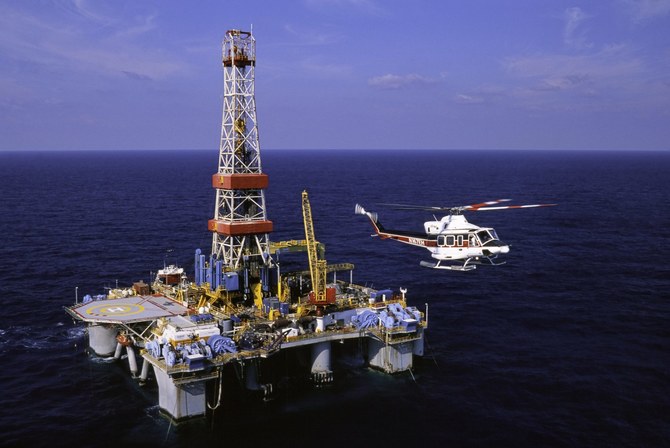
RIYADH: Saudi Arabia’s Ades Holding Co. continues to expand its regional footprint as it seals two contracts worth SR511 million ($136.2 million), highlighting its growing influence in the oil and gas sector.
Ades, which specializes in providing drilling and intervention services, signed a contract valued at up to SR350 million with Total Energies to operate an offshore drilling platform in Qatar.
The agreement includes a mandatory one-year period with an option to extend it for up to an additional 18 months, according to a bourse filing.
Operations are slated to begin in the second half of 2024. The company emphasized that there are no related parties involved in this contract.
This contract comes on the heels of April’s announcement, where Ades was awarded the responsibility to operate another offshore drilling platform by Total Energies in Qatar.
This previous contract enables Ades to maintain its market presence robustly, as it will now operate three drilling platforms in the region.
This expansion comes after the company’s strategic move to transfer its Emerald Driller platform to Indonesia.
Moreover, Ades announced in a separate release that it was awarded a 21-month contract to operate an elevated platform in the Gulf of Suez.
The company received a direct award letter from the Suez Oil Co, also known as SUCO, in Egypt, with operations expected to commence in the coming weeks.
In a statement on Tadawul, the company disclosed that the contract is valued at SR161 million.
This new engagement in Egypt is part of Ades’s broader strategy to reactivate its operations regionally. It follows recent contracts in Thailand and Qatar, bringing the total number of reactivated platforms to three out of the five that were recently suspended in Saudi Arabia.
The publicly traded company saw a slight decrease in its stock price after its announcements.
Saudi government assets to remain strong through 2030: S&P Global

RIYADH: The Saudi government’s assets are forecasted to remain strong amid steady economic diversification efforts aimed at reducing the Kingdom’s dependence on oil, stated a new report.
According to S&P Global, the increasing debt issuance to fund Vision 2030 projects may exert pressure on Saudi Arabia’s net asset position until the end of the decade. However, the Kingdom will mitigate this impact through its wise and prudent fiscal policies.
“S&P Global Ratings expects that growing debt issuance to finance Vision 2030 projects could pressure the sovereign’s fiscal metrics. In our base case, however, we expect the government’s net asset position will deteriorate but remain strong,” stated the credit-rating agency.
It added: “The ramp-up in fiscal deficits and debt could weaken the government’s balance sheet far sooner than returns on investment will accrue. Much will depend on the roles that foreign investment, the private sector, and capital markets will play in financing Vision 2030.”
According to the report, Saudi Arabia’s sovereign wealth fund, spearheading the Kingdom’s economic diversification efforts, aims to invest $40 billion annually in the local economy to bolster Vision 2030 goals.
The US-based firm highlighted that the Saudi government will continue to support the Public Investment Fund in various ways, including funding essential infrastructure for mega and giga project sites.
Domestic banks to play key role
Furthermore, S&P Global added that the Saudi government and PIF will try to boost external funding and diversify the investor base to mitigate the impact on domestic banks’ liquidity.
“We expect domestic banks will still play a key role in funding the public and corporate sectors, given the large size of projects. Domestic banks will likely see a shift from mortgage lending toward corporate lending and Vision 2030 project funding,” noted the credit rating agency.
However, the report added that the Kingdom’s banking system alone cannot accommodate all the financing needs associated with Vision 2030.
Banks in Saudi Arabia will use alternative strategies, such as raising additional external funding, to meet the increasing credit demand.
“In 2023, Saudi banks injected almost $55 billion in the form of investments and financing in the public and corporate sectors, excluding financing to the retail sector. In 2024, we expect banks will grow their lending book by 8 percent to 9 percent,” said S&P Global.
It added: “Under the assumption that 70 percent of that lending is for corporates, banks can inject $40 billion to $44 billion in financing. A portion of that could be used in Vision 2030.”
The report projected an approximate 8 percent increase in deposits for 2024, with external debt issuance expected to reach around $10 billion to facilitate anticipated lending growth.
Earlier this month, another analysis by the agency underscored the robust condition of the Saudi banking sector, highlighting strong asset-quality indicators and overall capitalization.
S&P Global further noted its expectation for banks’ solid profitability and conservative dividend payouts to sustain their capitalization over the next one-to-two years.
The report also noted that Saudi banks have already accessed international capital markets, a trend the credit-rating agency expects to persist for the next three to five years.
Furthermore, the Saudi government and its related entities are anticipated to inject deposits into the banking system, thereby bolstering the credit growth of financial institutions in the Kingdom.
Public and private investment
S&P Global also predicted that certain Vision 2030 projects will extend beyond this decade, facilitating a more organic increase in economic activity and foreign investment.
While PIF and the government will persist in debt-financed investment for Vision 2030, other government-related entities, including portfolio companies of the wealth fund, private-sector participants, and foreign direct investment, will also play crucial roles in implementing economic diversification projects in the Kingdom.
The report underscored that FDI inflows have averaged around 2 percent of Saudi Arabia’s gross domestic product over the past three years, with the Kingdom aiming to increase this to 5.7 percent by 2030.
According to S&P Global, the opening of free economic zones and the regional headquarters program could expedite the growth of FDI inflows in the coming years.
“Future FDI inflows could offer upside on the back of growing investment opportunities and government efforts to improve regulatory and business conditions. These efforts include the opening of free economic zones and a 30-year tax break for multinational companies opening regional headquarters in the country,” added the agency.
It underscored the role of the Saudi capital market in catalyzing the Kingdom’s economic diversification efforts.
The report highlighted that the Saudi exchange is collaborating closely with the Capital Markets Authority to streamline processes and attract both local and international issuers by enhancing market functionality and efficiency.
These initiatives by Tadawul will ultimately enhance the appeal of debt and equity transactions on capital markets and facilitate a more diversified funding base for Vision 2030 projects.
It also noted that the Saudi government possesses additional assets it could leverage to support Vision 2030 and prevent an expanding debt bubble. This includes an 82 percent stake in Saudi Aramco, which boasts a market capitalization exceeding $7 trillion.
“The government has thus far transferred a total 16 percent stake in Saudi Aramco to the PIF and its subsidiaries, which has substantially added to the PIF’s asset base, leading to dividend returns that it can deploy toward Vision 2030 projects. The government could choose to sell further stakes in Aramco through an IPO (initial public offering) to raise additional financing,” added the agency.
Pakistan’s benchmark share index rises as much as 1.5%
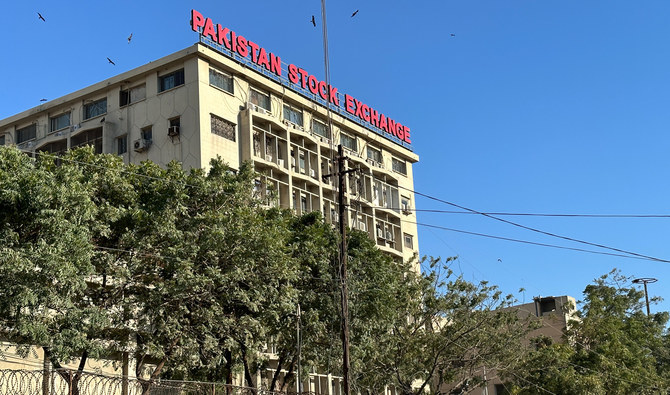
- Pakistan’s benchmark share index has surged 73.4% over the past year, up 12.9% year-to-date
- Market reacting to Saudi business delegation’s arrival, IMF statement on mission visit, says analyst
KARACHI: Pakistan’s benchmark share index rose 1.5% during intraday trade on Monday, to an intraday high of 72,986 points.
The index has surged 73.4% over the past year and is up 12.9% year-to-date.
A Saudi delegation arrived in Pakistan on Sunday for talks on trade and investment opportunities, particularly in the exploration and production sectors.
Adnan Sheikh, assistant vice president at Pak Kuwait Investment Company, said the market was up following news of the delegation’s arrival along with an IMF statement regarding a mission visit.
“The PSX is still very cheap with price to earnings ratio of under 5x compared to average of 8x,” Sheikh added.
Pakistan last month completed a short-term $3 billion program, which helped stave off sovereign default, but the government of Prime Minister Shehbaz Sharif has stressed the need for a new longer term program.
An International Monetary Fund mission is expected to visit Pakistan this month to discuss a program, the lender said on Sunday ahead of Islamabad beginning its annual budget-making process for the next financial year.
The IMF did not specify the dates of the visit, nor the size or duration of the program.
Earlier, in an interview with Reuters, Finance Minister Muhammad Aurangzeb said the country hoped to agree the outlines of a new IMF loan in May.
Pakistan is expected to seek at least $6 billion and request additional financing from the Fund under the Resilience and Sustainability Trust.



